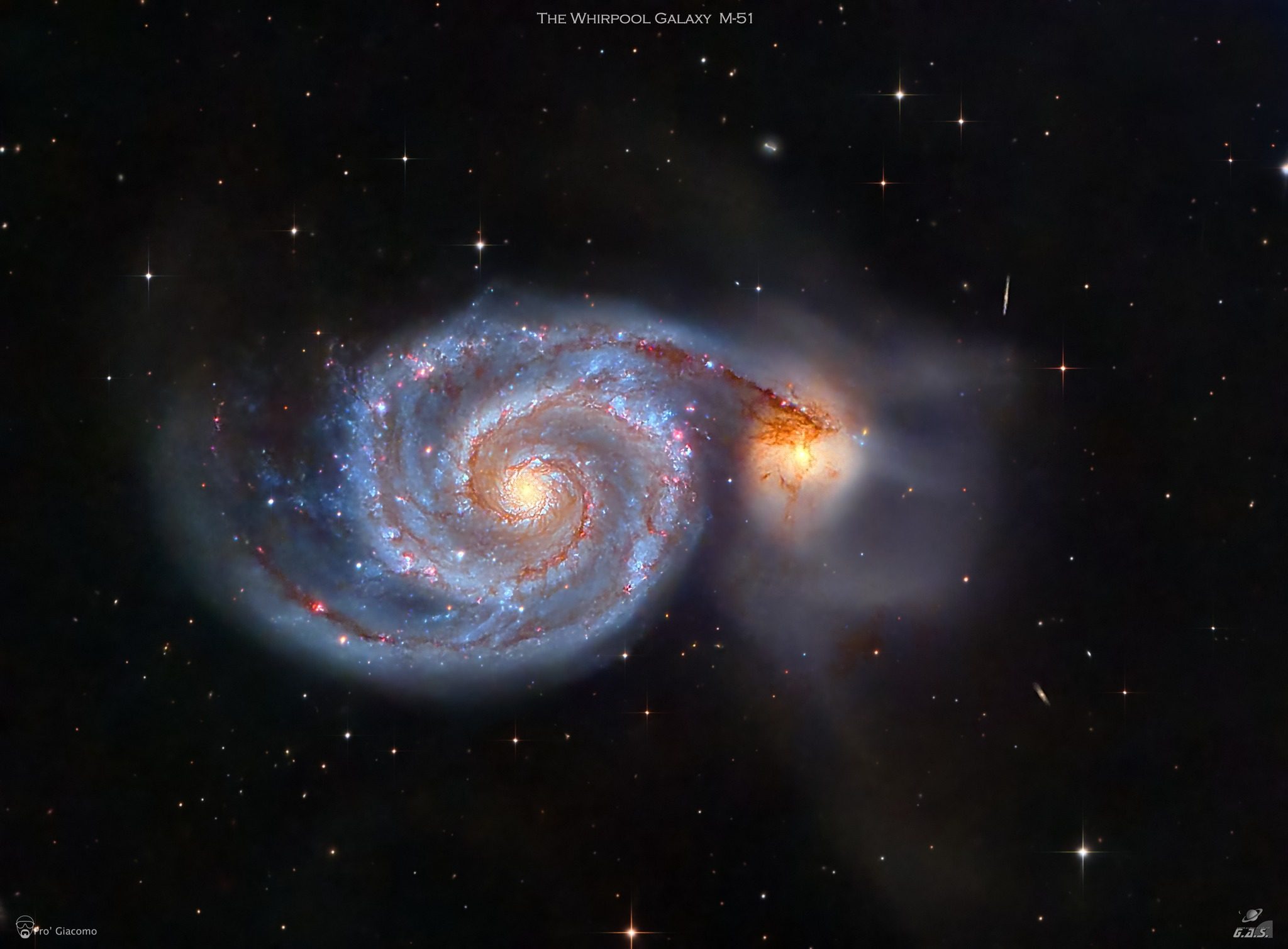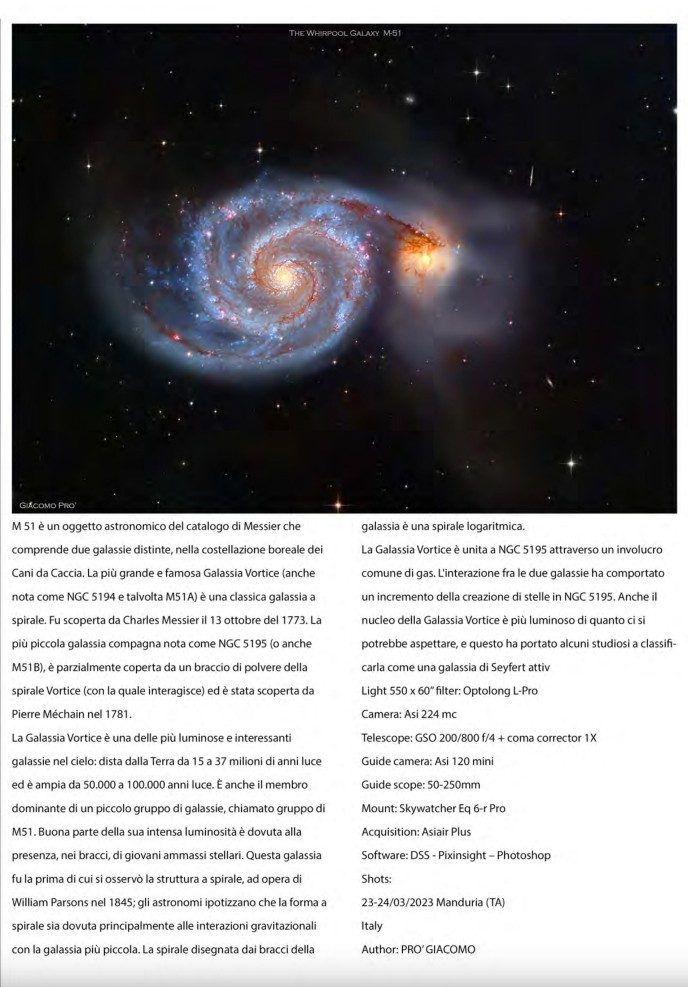Vortex M51 Galaxy + Giacomo Pro + L-Pro
Vortex M51 Galaxy + Giacomo Pro + Optolong L-Pro
Credit: Giacomo Pro
M 51 is an astronomical object in the messier catalogue that includes two distinct galaxies in the boreal constellation of hunting dogs. The largest and most famous whirlpool galaxy (also known as NGC 5194 and sometimes m51a) is a classic spiral galaxy. It was discovered by Charles messier on October 13, 1773. The smallest galaxy, known as NGC 5195 (or even m51b), is partially covered by a swirl spiral dust arm (with which it interacts) and was discovered by Pierre mechain in 1781.
The whirlpool galaxy is one of the brightest and most interesting galaxies in the sky. It's also the dominant member of a small group of galaxies, called the M51 group. Much of its intense brightness is due to the presence of young star masses in the arms. This galaxy was the first one whose spiral structure was observed by William parsons in 1845. Astronomers assume that the spiral form is mainly due to gravitational interactions with the smallest galaxy. The spiral drawn by the arms of the galaxy is a logarithmic spiral.
The vortex galaxy is joined to NGC 5195 through a common gas envelope. Interaction between the two galaxies led to an increase in star creation in NGC 5195. The nucleus of the whirlpool galaxy is also brighter than might be expected, and this has led some scholars to classify it as an active seyfert galaxy.
Located some 23 million light years from the earth, the whirlpool galaxy is one of the brightest galaxies in the sky, owing not only to its apparent size (the angular diameter is about 11.2 minutes of arc), but above all to the very shiny clusters of young blue stars scattered along the entire path of its spiral arms.
Also known as messier 51 (m51) or NGC 5194, was discovered by Charles messier on 13 October 1773.
That beige spot, partially covered by the long spiral arm of m51 (with which it interacts) is another galaxy. It's called NGC 5195 (or m51b), smaller and less light. It was identified only eight years later, in 1781, by Pierre mechain. By contrast, m51's spiral structure was first observed by Lord redsons (third count red William parsons) in 1845, who drew an unmistakable sketch of it.
Technical details:
Light 550 x 60” filter: Optolong L-Pro
Camera: Asi 224 mc
Telescope: GSO 200/800 f/4 + coma corrector 1X
Guide camera: Asi 120 mini
Guide scope: 50-250mm
Mount: Skywatcher Eq 6-r Pro
Acquisition: Asiair Plus
Software: DSS – Pixinsight – Photoshop
Shots: 23-24/03/2023 Manduria (TA)
Author: Giacomo Pro’
"Amateur Astrophotography Magazine" published
Hope you like it.






